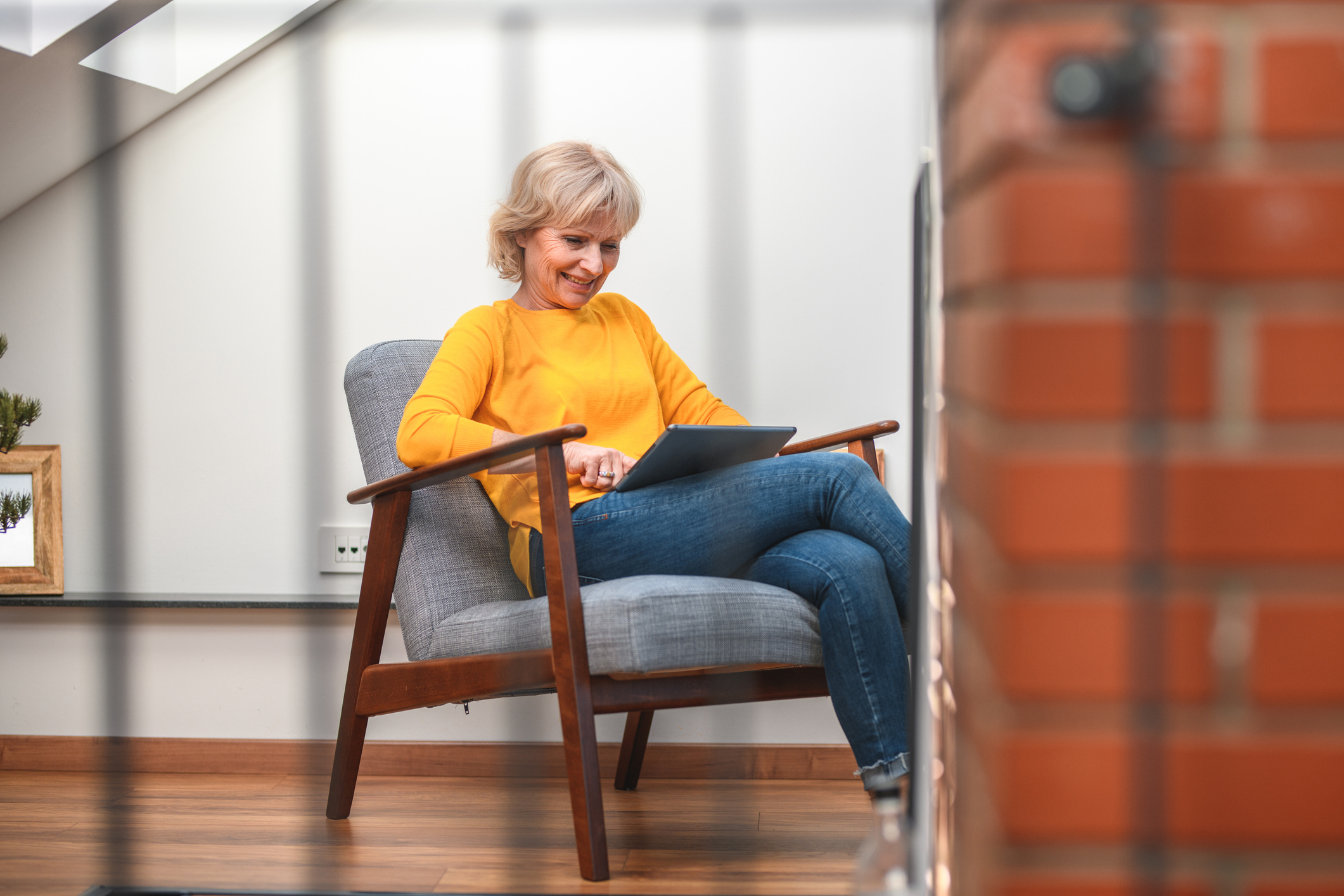Get Easy Health Digest™ in your inbox and don’t miss a thing when you subscribe today. Plus, get the free bonus report, Mother Nature’s Tips, Tricks and Remedies for Cholesterol, Blood Pressure & Blood Sugar as my way of saying welcome to the community!
12 reasons to stop sitting with your legs crossed

I was always taught that it was polite for women to sit with their legs crossed at the knee, especially if I was wearing a dress or skirt. It quickly became a habit, a comfortable one at that (which may be why a lot of men do it too), regardless of what I was wearing.
Turns out I should have explored this habit a bit more thoroughly…
While it may seem comfortable to sit with our legs crossed, this action has a lot of downsides when it comes to our health.
12 consequences of crossing your legs
1. Hip misalignment. Crossing your legs can cause one hip to shift higher than the other. This can lead to the pelvis becoming misaligned.
2. Spine and shoulder misalignment. Because of the way your skeleton is connected, a misalignment of the pelvis can lead to a misalignment of the spine and shoulders.
3. Misaligned head position. When you cross your legs, your spine compensates to keep your center of gravity above the pelvis. And when this happens, this can change the bones of the neck, throwing your head position out of alignment.
4. Muscle weaknesses. When your hips become misaligned, prolonged stretching of the gluteal muscles on the higher hip side weakens those muscles. The resulting poor posture, stresses and strains caused by sitting with your legs crossed can also cause weakness in the muscles of the pelvis, lower back and neck. The more you cross your legs when you sit, the more pronounced these imbalances and weaknesses will become.
5. Increased scoliosis risk. When you constantly sit with your legs crossed, you increase the odds of developing an abnormal alignment of the spine known as scoliosis, as well as other deformities.
6. Greater trochanteric pain syndrome risk. Sitting with your legs crossed raises your risk of developing trochanteric pain syndrome, a common and painful condition that affects the outer side of the hip and thigh.
7. Leg and foot abnormalities. Consistently crossing your legs when you sit can compress and injure the peroneal (or fibular) nerve in your lower leg. Two symptoms of this condition are weakness when trying to lift the side of the foot where your little toe is located and foot drop, where the whole of the foot hangs down. Usually, these symptoms are short-lived and return to normal within a few minutes.
8. Higher risk of blood clots. Crossing your legs changes the speed at which blood moves through the blood vessels in the lower limbs. This can raise the risk of blood clots forming. If a clot forms in one of the deep veins of the legs, that’s known as deep vein thrombosis (DVT) and can cause leg pain and swelling. DVT can lead to pulmonary embolism, a dangerous condition where the clot breaks off and travels to the lungs, blocking blood flow there.
9. Cuts off circulation. Sitting with your legs crossed can cut off circulation. This can contribute to a sudden drop in blood pressure known as orthostatic hypotension, which can cause dizziness upon standing too quickly.
10. Causes leg cramps. Long periods of sitting with your legs crossed can deplete the nutrients your muscles need to function properly. This can lead to painful leg cramps.
11. Increased blood pressure. Have you ever noticed that the nurse always tells you to keep your feet flat on the floor when taking your blood pressure? That’s because crossing your legs at the knees can cause your blood pressure to rise. What happens is when you cross your legs, your blood pools in the veins, causing your heart to have to work harder to pump blood through the body. This can increase the risk of blood vessel damage.
12. Reduced sperm production. For optimal sperm production, the temperature of the testicles needs to be between 2 and 6 degrees Celsius below standard body temperature. Crossing the legs could reduce sperm count and quality because it raises the temperature of the testicles by as much as 3.5 degrees Celsius.
What about the lotus pose?
There’s more than one way to sit cross-legged. When you’re sitting in a chair, you can either cross your legs at the knee or the ankle. Crossing at the ankle isn’t as hard on the body as crossing at the knee, though it still can cause misalignment and muscle imbalances.
Then there’s the common yoga or meditation pose known as lotus position, where you sit on the floor with your legs crossed like a pretzel rather than straight in front of you. There isn’t a lot of data as to whether long periods of time spent in this position can cause the same issues as sitting cross-legged in a chair. But both yoga and meditation have so many health benefits that they probably offset any downsides to the short amount of time spent in the lotus position.
Overall, when you’re sitting in a chair, it’s best to sit with your legs uncrossed and feet flat on the floor. Using a footrest should be fine as long as your legs face forward and your feet rest evenly on the footrest.
It’s also crucial that you not sit still in the same position for too long. Try to take breaks every hour, at minimum, and stand up or walk around for a few minutes before resuming your seat.
Editor’s note: There are perfectly safe and natural ways to decrease your risk of blood clots including the 25-cent vitamin, the nutrient that acts as a natural blood thinner and the powerful herb that helps clear plaque. To discover these and other secrets of long-lived hearts, click here for Hushed Up Natural Heart Cures and Common Misconceptions of Popular Heart Treatments!
Sources:
Don’t Sit With Your Legs Crossed. An Anatomy Expert Explains Why. — ScienceAlert
Deep vein thrombosis (DVT) — Mayo Clinic
Best Posture for Sitting at a Desk all Day — Sydney Sports & Exercise Physiology













